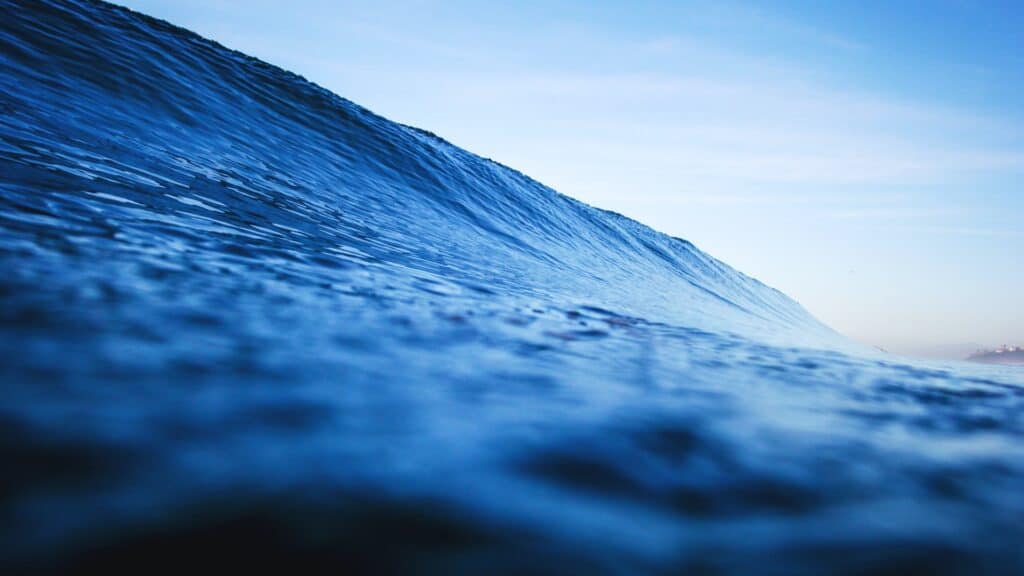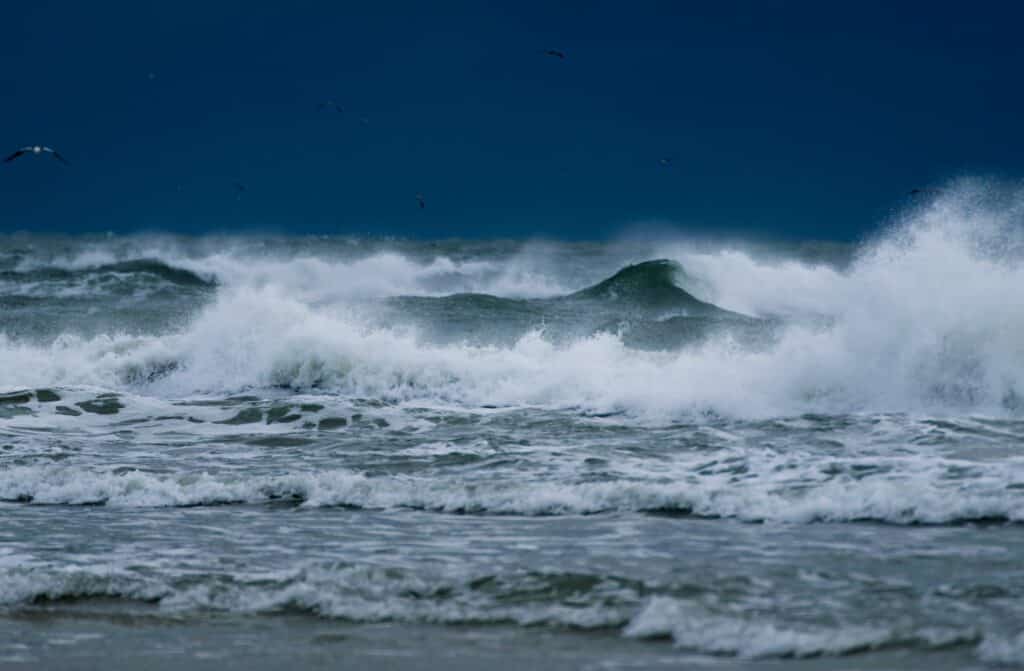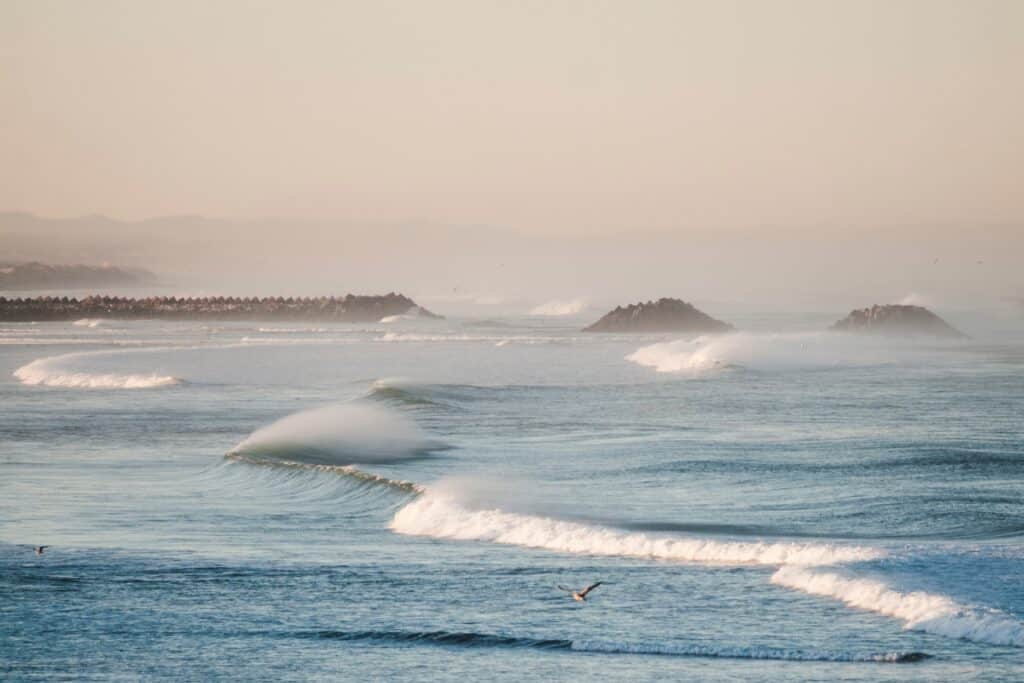One of the key aspects of making sense of a surf forecast is a general understanding of the difference between onshore and offshore winds and how they impact surfing conditions. Each surf break is unique and depending on numerous factors, will work better in certain swell and wind directions, however the basic concepts of local wind direction apply to each and every spot.
This article looks at the role that wind plays in creating quality waves for surfers, what offshore and onshore waves are and what causes them.
How does wind affect waves?
Wind plays a fundamental role that most surfers probably take for granted. Of course windy conditions can destroy an otherwise great surf session, but the bottom line is that there wouldn’t be any waves without wind!
As it happens, wind is what creates waves in the first place. This can be in far off locations across the ocean where significant storm and wind activity produces ground swells which travel great distances and arrive as long period waves on the coastline. Or this can be in more localised winds which produce wind swells that become waves at our beaches.
Whatever the source of the swell may be, when it hits the coastline, it is the local wind conditions which play an alternative role in determining whether waves are great, or terrible for surfing. It’s the local winds and specifically onshore vs offshore winds which surfers think about most when they’re considering the surf forecast.
When it comes down to it, small changes in wind speed and direction at any given surf break will greatly affect the quality of the waves.
What are offshore winds?
When we talk about favourable local wind conditions for surfing conditions, we’re generally talking about light offshore winds which describes a wind which is blowing from the land directly out to see. A light offshore wind has the effect of creating ideal “glassy” and clean wave conditions, of which any seasoned surfer constantly longs for.
More to point of clean waves, offshore winds also delay the actual breaking of the wave which leads to waves that only break at a critical point and therefore provide longer held and steeply formed wave faces, which makes it faster and a better canvas to surf on and that ultimately breaks in a more fluid manner.
Like anything, offshore waves are only good until a certain point. Strong offshore conditions can delay the breaking of waves to the point that they either close out or don’t break at all (in the case of smaller waves). Further as they act as a force against you and your surfboard, they can make it harder for a surfer to actually get into and catch the wave as well as being a source of consistent water spray in the eyes.

What are onshore winds?
As opposed to offshore winds, onshore winds generally equate to less than ideal surfing conditions and are broadly defined as ocean breezes that are directed from the ocean towards the land but can also be thought of as winds from any direction that is not offshore.
When we think of onshore waves, images of messy and choppy waves come to mind – hard to surf properly and quite uninviting for surfers.
Onshore winds can increase the tendency of waves to break earlier and in deeper water which can mean they’re less steep, less conducive to creating down the line speed for a surfboard and harder to surf. It can also lead to waves breaking and then reforming instead of maintaining a surfable wall between sections of the wave.
The potentially more noticeable impact of onshore winds is the creation of additional short period “wind waves” mixing in with the better quality long period ground swell waves, creating unorganised and messy surf conditions.
If there’s any upside to onshore winds it is in the fact that they can create waves where there were would otherwise not be any waves (no other swell sources) and also that in today’s increasingly crowded surf spots, less than ideal surf conditions can lead to… less crowds.

What causes onshore and offshore winds?
Local winds along the coastline usually occur due to differences in pressure within the atmosphere in which air will shift from areas of higher pressure to areas with lower pressure. This, in return, results in the creation of winds at various speeds and what we experience as onshore oceanic breeze and offshore land breeze. Summarised simply, if the atmospheric pressure is high, and with a clear sky, the land warms up in the day time and gets cold by night time. The result of this is that wind will blow from the sea at daytime towards the land, while at night, it will blow from the land towards the sea.
This regular local onshore and offshore wind system is experienced in warm climates. It is particularly noticeable on the western side of continents where there is a large landmass with very little vegetation or a coastal desert, and where there is coastal upwelling in the ocean causing cold surface currents close to the coast.
The exchange between land and ocean is a fairly regular and predictable pattern that, if you’re aware of and able to recognize, you can capitalize on to enjoy the best conditions. It is the result of the simple fact that the sea and the land are two different bodies, and they absorb the heat of the sun and change temperature at different rates. A solid heats up and cools down faster than a liquid so in the warm summer months the land heats up and cools down on a daily basis whereas the sea temperature remains fairly stable, rising slowly over the course of the summer.
During the day the sun heats the land and causes its temperature to increase so that the air above it warms and rises (convection). This leaves a space that must be filled, so cooler air from above the sea is pulled in horizontally to replace it (a process called advection), a movement that we recognize as the onshore sea breeze.
As the temperature of the land heats throughout the day this sea breeze increases in strength until the sun starts to drop and the temperature of the land begins to fall, resulting in the evening glass-off. Overnight the temperature of the land may drop below the temperature of the sea (particularly where there is a coastal desert with little vegetation to “trap” the heat overnight), which will cause the opposite to happen – warmer air over the sea rises and causes air to flow in and replace it from the land thus causing an offshore breeze that may last until after sunrise.
As the summer goes on the temperature of the sea will slowly rise in comparison to the daily temperature fluctuations of the land, meaning that the offshore morning land breeze will last longer and longer.

Final Thoughts
It’s clear that wind is as important as the water itself when it comes to wave quality and for surfers it’s a factor that we shall always be at the mercy of. We hope this article has given you some insight into onshore vs offshore winds for surfers and helps you in your quest to better understand the surf forecast.
